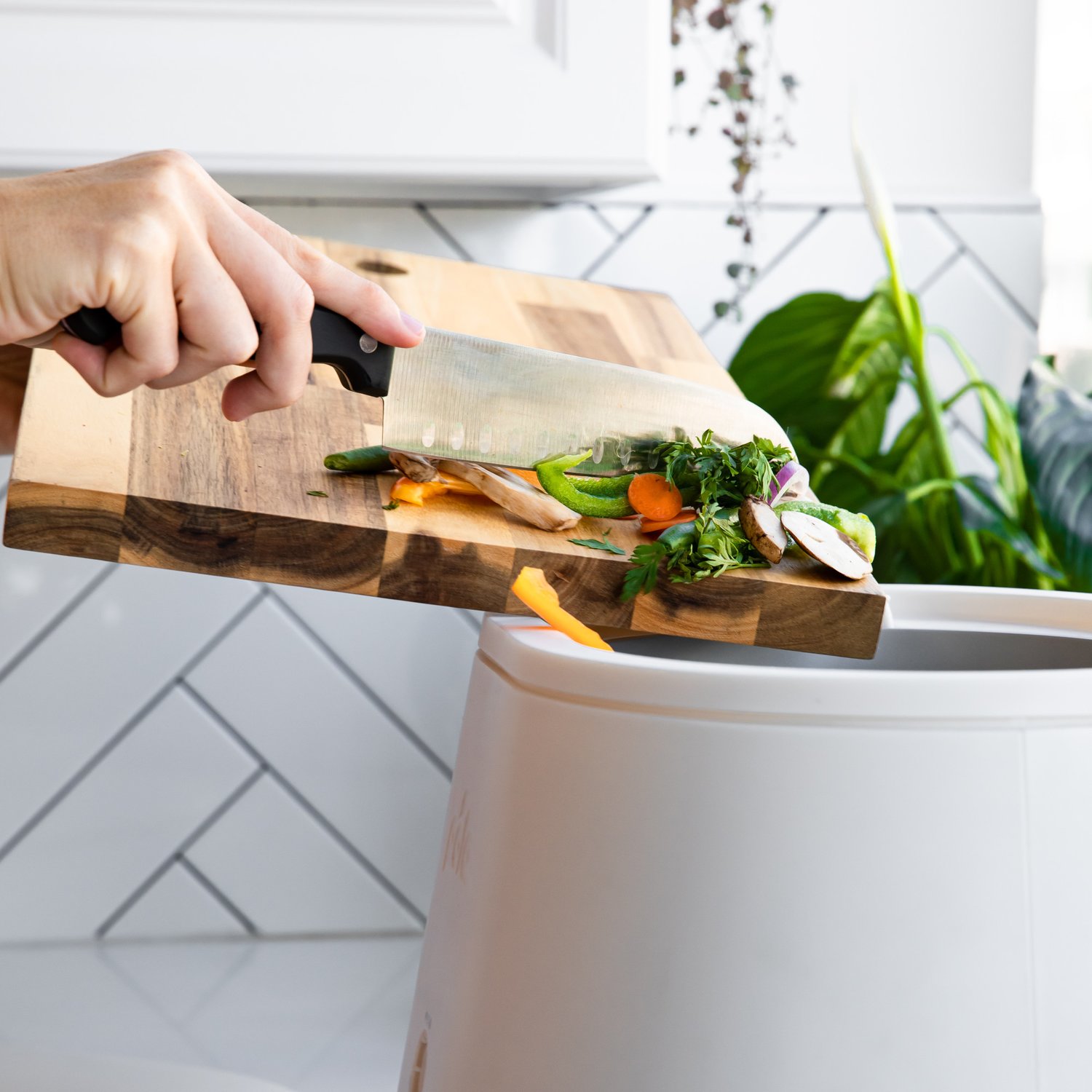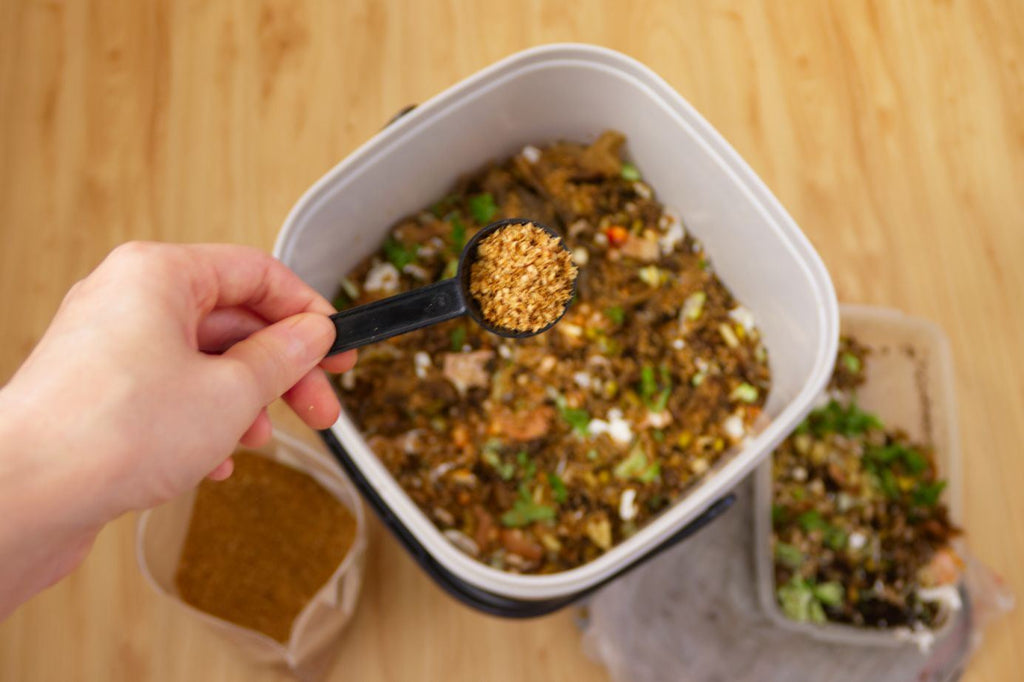
Watermelon is the fruit of the summer. We don't know about you, but the amount of watermelon we eat during the summer months is probably a little extreme. The pink flesh of a watermelon is tasty and perfectly refreshing on hot days. But, since watermelon is such a healthy snack option, we won't be complaining anytime soon.
This unfortunately results in a lot of rinds going to the bin. Since many of us rarely eat watermelon rind, it can seem like a frightening amount of waste. If you want to avoid that waste while still enjoying watermelon, you're probably wondering if you can compost watermelon rinds. The short answer is yes, you can. If you're looking for a little more than that, then let's get into the details of why and how.
Table of contents
Let's start with a more complete answer on whether or not you can compost watermelon rinds.
Can watermelon rinds be composted?

While it may seem like watermelon rinds would be too hard and dense to compost well, they actually can be composted like most other organic materials. However, there are a few important things to keep in mind. For example, watermelon rinds should always be chopped into smaller pieces when added to a compost pile.
Watermelon rind is an excellent source of nitrogen, nutrients, trace minerals, calcium, and potassium. This makes them a wonderful addition to a compost pile, whether you're composting traditionally or with any other method. But, watermelon rinds need to be prepared differently for various composting methods. So, let's talk about how to compost watermelon rinds.
How to compost watermelon rinds: 4 different methods
Since there are plenty of ways you could be composting, we'll cover what to do for many of the more popular composting methods.
1. Traditional backyard composting

If you've got a traditional backyard compost pile, you can pretty easily add watermelon rinds to it. You'll want to make sure you chop the rind into small pieces instead of throwing whole slices in there, though. It will still decompose if larger chunks are in there, but it will be a lot slower than the rest of the compost pile. While that's not necessarily a huge deal, having part of your compost heap finished with some chunks of watermelon rind will just be annoying. It's less effort to chop the rind into small pieces before putting it in the compost piles than it is to sift rind chunks out of the final compost.
One other potential problem with outdoor composting is birds. Some birds will want to peck at the fresh watermelon flesh left on the melon rind. If the melon rinds are near the top of the compost bin, this can mean your compost pile will get picked at by birds. You have a couple of options in this case. The first is to just bury the melon rind deep into the compost pile so that the birds won't be attracted to it. The other option is to hang the watermelon rind by a bird feeder to encourage them to clean it off before composting it.
Pro tip: Watermelon rind adds lots of moisture to compost piles. To balance this out, make sure to also add plenty of dry, brown materials to your piles at the same time.
2. Recycling your scraps with Lomi

Lomi is a small but powerful kitchen appliance that is able to turn your food waste into nutrient-rich dirt in less than a day. Simply by adding your kitchen scraps to Lomi and pushing a button, you can dispose of your waste in an eco-friendly way while also receiving a daily supply of natural fertilizer for your plants and gardens.
Lomi is capable of breaking down lots of organic waste, including your watermelon scraps. Just cut up those watermelon rinds and add them to Lomi's bucket along with some other fruit and vegetable scraps. However, because of how hard watermelon rinds are, it's important to only add small amounts at a time to Lomi. But, considering how quickly Lomi can break down your kitchen scraps, spacing the watermelon rind out over multiple cycles won't be an issue.
Pro tip: Lomi has three different modes you can choose from depending on your preferences and needs.

3. Worm composting

If you're a fan of worm composting, you'll be happy to hear that your worms can eat watermelon rinds. The watermelon rind provides moisture beneficial to the worms in the bin, and they'll happily munch on those melon rinds. When composting watermelon rinds this way, it can take up to four weeks for the worms to break them down.
If you have an indoor worm bin, one potential problem is that the watermelon rind can attract ants and flies. If you want to avoid that problem, just place the watermelon rind deep in the worm bin closer to the bottom. This should prevent food scraps in general from attracting pests.
Pro tip: Once again, you should at least chop the watermelon rind into small chunks to make it easier for it to compost. However, you also have the option of grinding up the rinds and mixing it with manure to make it easier for the worms to eat them.
4. Using a Bokashi composter

A somewhat easy way to compost indoors is with a Bokashi bucket. Although Bokashi composting doesn't lead to a completely finished product, it is a relatively quick composting method. Bokashi compost finishes within just a few weeks, but that end product needs to be buried for another couple of weeks to be useful as a soil amendment. However, if you have the space and time for that, it is a good option.
A Bokashi bucket also has no problem composting watermelon rind. When composting watermelon rind this way, you do just need to ensure you're adding brown matter to make up for the excess moisture watermelon rind produces.
Pro tip: If you're not sure what to add for brown compost ingredients, we would suggest keeping a bag of shredded paper by your Bokashi bin. This makes it really quick and easy to add as many brown materials as you need.
3 FAQs about composting watermelon rinds
If you're curious about composting watermelon and watermelon rind, here are some other common questions that we've answered for you.
1. Are watermelon rinds good for compost?

Yes, watermelon rinds are good for composting. They add plenty of nutrients to compost, making it even better for your plants. It's also the most eco-friendly method of disposing these leftovers. Composting watermelon rinds means reducing your environmental impact while creating a beneficial product.
2. Can you compost watermelon seeds?

Watermelon seeds can be composted along with the flesh and rinds. However, there is a chance that the seeds could germinate. Even though the composting process produces heat, the temperature in most backyard compost bins won't reach a point to kill seeds. Unfortunately, there's a risk that the seeds will germinate.
You can prevent your compost from being ruined by sprouted seeds. If the seeds are allowed to dry out before composting fully, there is less risk that they will germinate. By roasting them in an oven, you can speed the process along.
So, suppose you accidentally threw in a few watermelon seeds and don't want any unexpected watermelon seedlings to take root. In that case, you could let your compost to sit and further decompose for another few months. As long as you are prepared for little seedlings or have pre-roasted the seeds, it's perfectly fine to compost melon seeds.
3. Can you put watermelon rinds in a garbage disposal?

Watermelon rinds shouldn't be put through the garbage disposal. It's best not to dispose of fibrous food items such as watermelon flesh and rinds, celery, banana peels, carrot scraps, and potato peels in your garbage disposal. They can cause damage to appliances by jamming blades with their strings and fibers.
Smaller skins may become wrapped around the blades of your disposal, causing your disposal to remain blocked for a long period of time. Melon parts that are large and hard may also take a long time to grind, especially if they have already caused damage to the machine.
Instead of throwing them down the garbage disposal, head over to the compost bin. Watermelon rind benefits are many, and even after you have finished eating the watermelon, the rind can be composted, providing additional nutrients, moisture, and nitrogen for your compost pile.
5 ways to use watermelon rinds that aren’t composting

If you're unsure about composting watermelon rinds yourself, or you just want to try using them before composting them, here are a few great ideas:
- Pickle it: Pickling watermelon rinds is a fantastic way to use as much of the watermelon as possible. Just note, it's best to make a watermelon pickle a few days before you want to use it, so the pickled watermelon rinds have time to develop their distinctive flavor.
- Make a chutney: Chutneys can be made using the white rind, which has been removed from the outer green skin. It is a perfect accompaniment to a spicy curry, grilled chicken, or fish.
- Use it in curry: Remove the outer green peel, and use the white rind to make a curry as you would a vegetable. This is a specialty dish in parts of India. Paired with spicy chiles and warm spices, the watermelon rind provides a subtly sweet, cool complement paired with spicy chiles and warm spices.
- Prepare it as gazpacho: Make a cool summer gazpacho with white watermelon rind, tomatoes, and cucumber. This dish is the perfect refreshing meal for hot summer days.
- Turn it into candy: Many things can be candied, such as lemons, oranges, and grapefruit peels, so why not watermelon rind? Candied watermelon rinds can be a fun and creative treat in the summer.
When you've eaten all your watermelon and you're left with nothing but the rind, you've got some options. You can compost the watermelon rinds, and you can even do fun things with it to eat watermelon rinds. However, we highly suggest you don't just throw them away, even if that seems the easiest. If you're looking for a simple and eco-friendly way to get rid of most of your food scraps, you can easily get your own Lomi online!
Written by: Sereana Simpson
